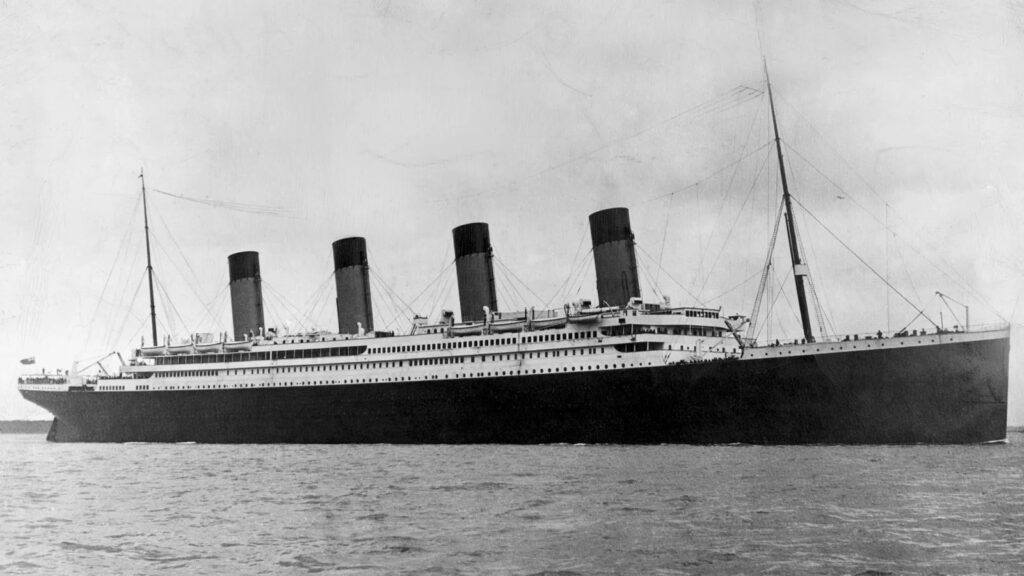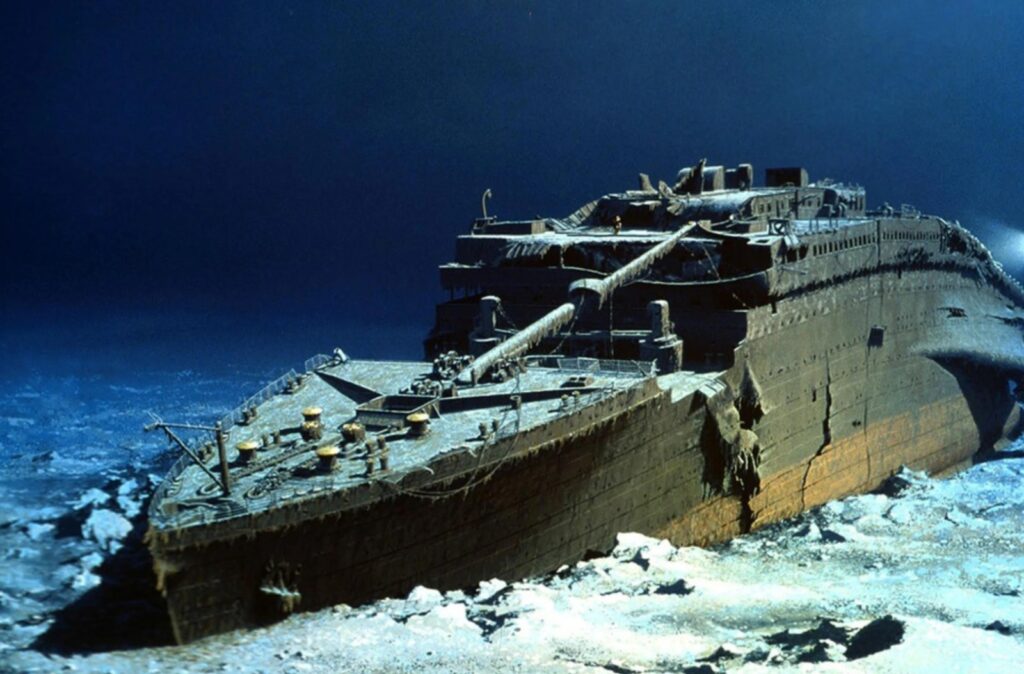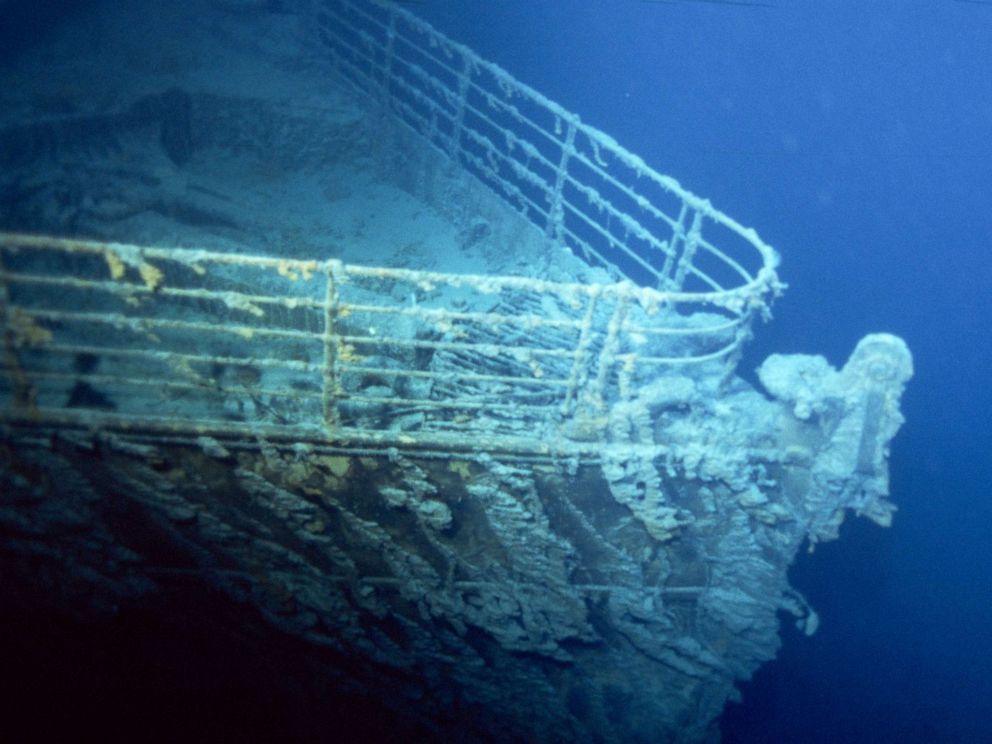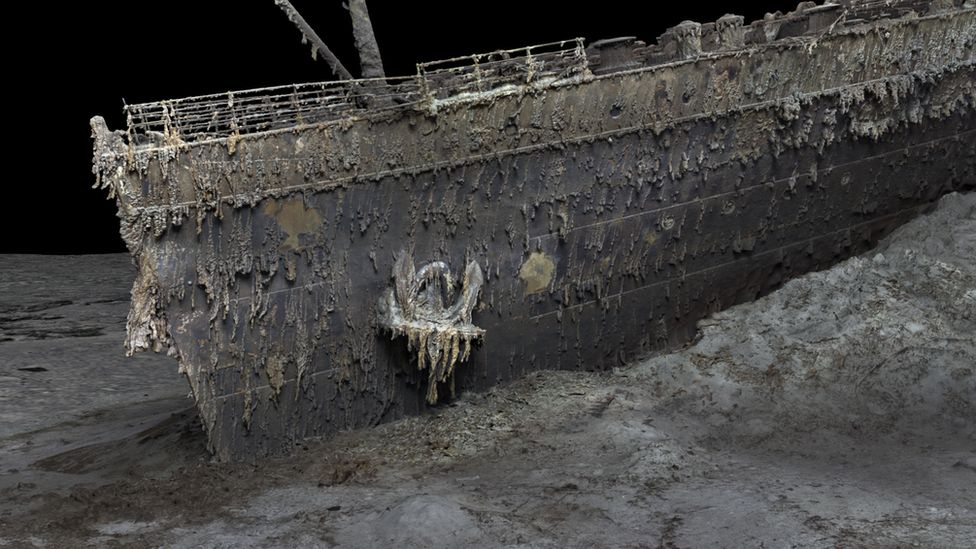The History of the Titanic Ship
The name Titanic, forever engraved in history, symbolizes both human ambition and the profound consequences of overconfidence. The story of the Titanic, often referred to as the “unsinkable” ship, unfolds as a narrative of opulence, engineering marvels, and, tragically, disaster. In this detailed blog post, we will delve into the history of the Titanic, examining its construction, the pivotal night of its sinking, and the fundamental reasons behind the tragedy that resulted in the loss of over 1,500 lives.
Chapter 1: The Birth of the Titanic
The tale of the Titanic unfolds in the early 20th century, an era characterized by swift industrialization and the quest for technological feats. Amid intense competition among shipping companies to craft the most opulent and cutting-edge passenger liners, the British company White Star Line chose to participate by initiating the construction of three ocean liners, including the Titanic.

The construction of the Titanic commenced on March 31, 1909, at the Harland and Wolff shipyard in Belfast, Northern Ireland. The ship’s design was ambitious, featuring cutting-edge safety measures, opulent amenities, and the capability to accommodate more than 2,200 passengers and crew. Heralded as the largest and most luxurious vessel of its era, the Titanic stood as a symbol of human advancement and innovation.
Chapter 2: The Maiden Voyage
After several years of construction, the Titanic was prepared for its inaugural journey. On April 10, 1912, the ship set sail from Southampton, England, making stops in Cherbourg, France, and Queenstown (now Cobh), Ireland, before heading towards its final destination: New York City, USA. The passengers aboard represented a diverse cross-section of society, ranging from the wealthiest elites to immigrants seeking a fresh start in America.
The ship’s lavish accommodations included luxurious cabins, exquisite dining, a swimming pool, a gymnasium, and a grand staircase that would later become iconic. The Titanic stood as a marvel of its time, meticulously designed to provide unparalleled comfort and safety.
Chapter 3: The Fateful Night
On the night of April 14, 1912, tragedy befell the Titanic. Around 11:40 PM, the ship collided with an iceberg in the North Atlantic Ocean. This massive chunk of ice, broken off from a glacier, pierced the ship’s starboard side, creating a series of devastating punctures below the waterline.
The collision resulted from a combination of factors, including the Titanic’s high speed in iceberg-prone waters, the lack of binoculars for the lookouts, and the late detection of the iceberg, leaving little time for evasive action. The impact caused severe structural damage, leading to a swift influx of water into the ship’s compartments.
Chapter 4: The Sinking of the Titanic
As the Titanic started filling with water, the severity of the situation became apparent. The ship was designed with watertight compartments to manage flooding and maintain buoyancy even in the case of multiple breaches. Unfortunately, the damage caused by the iceberg surpassed the Titanic’s design capacity.

The crew worked tirelessly to address the crisis, but the situation worsened. Distress signals were dispatched, and nearby ships, including the RMS Carpathia, responded to the Titanic’s plea for assistance. Unfortunately, the lifeboats on the Titanic were insufficient to accommodate all passengers and crew, and many were launched only partially.
In the early hours of April 15, 1912, the Titanic succumbed to its fate and sank into the frigid waters of the North Atlantic. The sinking was a distressing and chaotic experience, with passengers and crew confronting the cold, dark ocean. As the ship vanished beneath the waves, it left behind a scene of devastation and tragedy.
Chapter 5: The Aftermath and Investigations
The Titanic disaster sent shockwaves globally, marking an unprecedented catastrophe with a profound impact on maritime safety regulations. Following the tragedy, inquiries were initiated in both the United States and the United Kingdom to unravel the causes and assign responsibility.
A crucial discovery was that the Titanic had been navigating at a high speed in waters known for icebergs. Furthermore, the limited number of lifeboats became apparent, inadequate for accommodating all passengers and crew. The absence of binoculars for lookouts and misinterpretation of crucial information also played a role in the collision.
These investigations prompted substantial changes in maritime safety regulations. New requirements mandated ships to carry sufficient lifeboats for everyone on board, international ice patrols were established, and enhancements were made in communication and navigation practices.
Chapter 6: The Legacy of the Titanic
The impact of the Titanic’s tragedy persists, serving as both a warning against human overconfidence and a poignant symbol of both tragedy and heroism. Countless books, films, documentaries, and exhibitions have explored the sinking of the Titanic, preserving the memory of those who lost their lives and those who survived, ensuring they are never forgotten.

Dr. Robert Ballard’s 1985 discovery of the Titanic’s wreckage deep beneath the ocean’s surface, resting at a depth of over 12,000 feet (nearly 4,000 meters), intensified public fascination with the ship’s narrative. This submerged find has offered crucial insights into the circumstances and occurrences that culminated in the Titanic’s tragic end.
Chapter 7: The Why Behind the Tragedy
The sinking of the Titanic resulted from a complex interplay of factors, with several key elements playing significant roles in the disaster:
- High Speed in Iceberg-Prone Waters: The critical decision to maintain a high speed, approximately 22 knots (over 25 mph), despite multiple iceberg warnings significantly contributed to the disaster. This made it challenging to steer clear of the iceberg once it was sighted.
- Insufficient Lifeboats: The Titanic was equipped with lifeboats enough to accommodate only about half of its total capacity. This inadequacy in lifeboats, influenced by regulations based on ship tonnage rather than passenger capacity, played a major role in the tragic loss of lives.
- Lack of Binoculars: The absence of readily available binoculars for the lookouts in the crow’s nest hindered their ability to spot the iceberg in time for evasive action.
- Misinterpretation of Key Information: The crew’s misunderstanding of crucial information related to the iceberg’s proximity and size led to further delays in reacting and executing avoidance maneuvers.
Conclusion
The Titanic’s history serves as a powerful reminder of the repercussions of overconfidence and a lapse in prioritizing safety as the foremost concern. The ship, initially deemed “unsinkable” and a symbol of human accomplishment, met a tragic demise that deeply impacted history.
Despite the heart-wrenching nature of the Titanic’s sinking, it sparked substantial advancements in maritime safety regulations. These improvements were instrumental in ensuring enhanced protection for subsequent generations of passengers and crew at sea. The enduring legacy of the Titanic stands as proof of the human spirit’s resilience and the lasting lessons derived from one of history’s most tragic maritime disasters.











RECENT COMMENTS